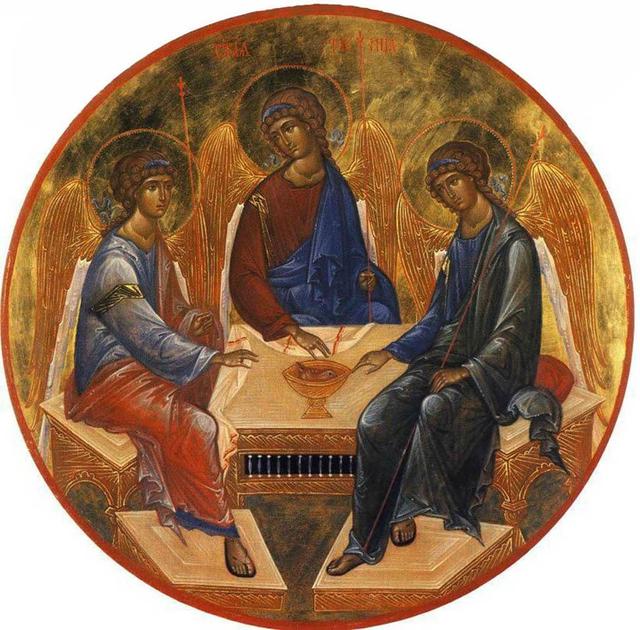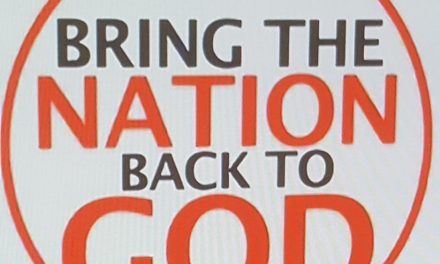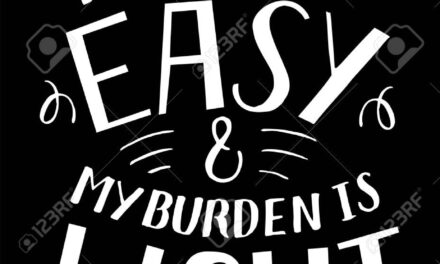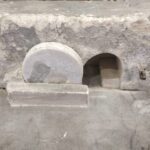Trinity Sunday began to be observed in England under St Thomas Becket in the 10th century and then spread to the rest of Western Christendom. Holy Trinity Sunday is the First Sunday after Pentecost, ushering in the season when the church hears about Jesus’ ministry and then about the church’s own ministry. Trinity Sunday is celebrated the Sunday after Pentecost as symbolic of the unity of the God the Father, Son and Holy Spirit.
The endless paradoxes in the Athanasian Creed: ‘not three eternals, but one eternal, not three uncreated, but One uncreated …’ may sound like some great riddle with tendency to glaze over. The doctrine of the Trinity is not just a later invention of Greek philosophy but a pointer to the simple faith of the Galilean fishermen. Trinity Sunday, can be fraught with vulnerable analogies. Water as solid, liquid, gas. Egg as shell, white, yolk. Person as parent, sibling, child. As we celebrate some of the most beautiful mysteries of our faith, the Trinity, Pentecost, and the Ascension, we are invited to look at our lives and communities with new eyes, and to welcome the Spirit that “renew[s] the face of the earth” into the dusty corners of our churches (Psalm 104:30). The Trinity calls us to redefine our expectations of God and to allow the Spirit to reveal new faces of herself. The Easter and Pentecost seasons close with the celebration of one of Christianity’s greatest mysteries: God as One, yet three.
The reflection for us is the relations between the members of the Trinity which constitute a crucial way to understand not only God but God’s involvement in the life of the Church and the world. The Isaiah reading about the death of King Uzziah in 8th century anchors our vision of the Trinity, set on the Lord of hosts and the throne of vast and awesome might (Is 6).
The application of Trinity as ‘not three, but one,’ point to an interdependent witness and template of all interactive reality in the life of faith. The Trinity provides us the perfect balance between unity and diversity, autonomy and mutuality, identity and community. The relationship is that ‘the Father is not consumed with Himself; He loves the Son and the Spirit. And the Son is not riddled with narcissism; he loves his Father and the Spirit. And the Spirit is not preoccupied with himself and his own glory; the Spirit loves the Father and the Son.’ Practically, the Trinity called us into oneness of life and mission, new space in the dance of love, to share the divine life, to be made gods, and to join in the work of redemption. The vision behind the Trinity is to make us temple of the divine presence, united to God, truly member of Christ’s own body. The ‘three-in-one’, when together, makes the whole. The Trinity is the epitome of integration and completeness. On this Trinity Sunday let us pray that we might, become more fully integrated and Christ-like people.
The Old Testament reading for today from Isaiah 6 is not a Trinitarian passage illustrating God as three in one. However, it does define and summons us to personal reconciliation with the Vision of the Holy One. The truth is that, humanity is at loss in the presence of the Holy One like Isaiah, speechless, a people “of unclean lips,” living “among a people of unclean lips” (v. 5), an affront to the Holy One, a people void of praise. Trinity in the image of the Holy One is a good news of hope that all is not loss. Trinity in the image of the Holy One invite us to a holy dance just as Isaiah comes alive, healed by the messenger of the Holy One, who said, “Your guilt has departed and your sin is blotted out” (v. 7b). Trinity invites us to have an encounter with Jesus “the one who descended from heaven” to become our Brother, to touch our humanity with his and take our sin into himself in order to lift us as high as God is (Jn 3:13). The Holy One that Isaiah encountered has drawn near us in Jesus Christ to deliver us from the horror of sin, judgement and darkness on the face of the earth. Trinity is an invitation to you and I to join in the on-going divine dance in order to experience reconciliation with God. Judgement provides opportunity for us to truly know ourselves as sinners in need of salvation, an expression of God’s grace and mercy over judgement. Isaiah’s response to God’s grace is a window of hope, of standing firm in the faith of the One Holy Eternal.
Trinity as a call to personal reconciliation with the Holy One opens our eyes just as Isaiah says “My eyes have seen the King, the Lord of hosts” (v. 5)! The reflection is that you and I can experience the power of God’s presence that creates fear, a sense of woe and lost-ness, and our sins and guilt have been burned away, the grace of God breaking through the divine dance. Trinity is a call to be born above, a rebirth as God draws near in us, ‘in the power of the Holy Spirit, the experience of the Holy One among us and in us.’ In our involvement in the divine dance, we receive not only salvation, we receive a healing vision, sharing the vision of the Holy One, the revelation and response to the voice from the One on high, who is asking us today: “Whom shall I send, and who will go for us?” (v. 8a). Trinity calls the church into a dance with the Holy One just as Isaiah responded and carried the message to the people with a vision of hope in a time of judgement and uncertainty. Trinity as a call to personal reconciliation with the vision of Holy One empowers us to say, “Here am I; send me.”











Recent Comments